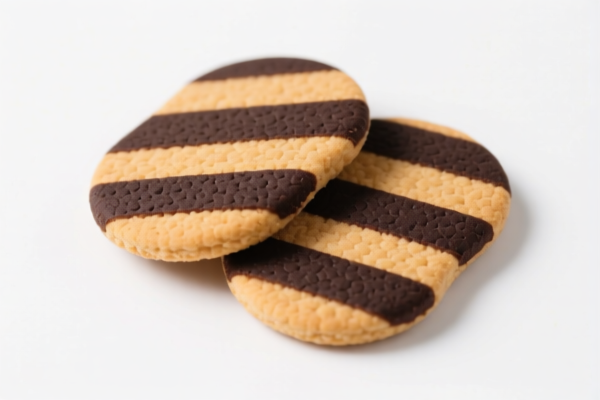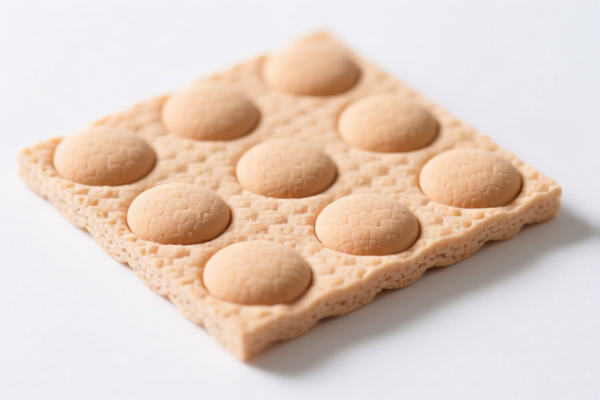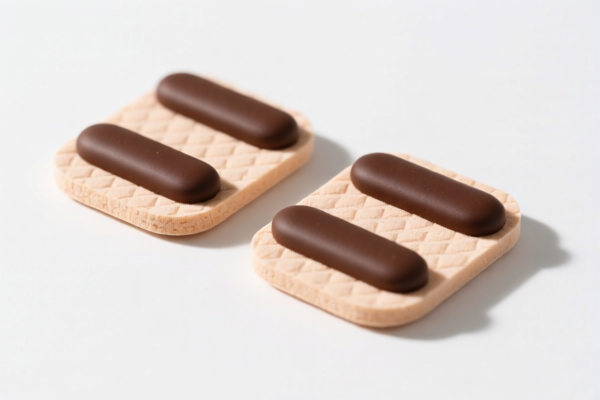| HS Code | Official Doc | Tariff Rate | Origin | Destination | Effective Date |
|---|---|---|---|---|---|
| 9018498040 | Doc | 30.0% | CN | US | 2025-05-12 |
| 9018908000 | Doc | 30.0% | CN | US | 2025-05-12 |
| 6114909070 | Doc | 35.6% | CN | US | 2025-05-12 |
| 6114909045 | Doc | 35.6% | CN | US | 2025-05-12 |
| 6307906010 | Doc | 37.5% | CN | US | 2025-05-12 |
| 6307906800 | Doc | 37.5% | CN | US | 2025-05-12 |
| 6304996040 | Doc | 33.2% | CN | US | 2025-05-12 |
| 3926902100 | Doc | 41.7% | CN | US | 2025-05-12 |
| 3926909950 | Doc | 42.8% | CN | US | 2025-05-12 |
| 3924905650 | Doc | 40.9% | CN | US | 2025-05-12 |
| 3924900500 | Doc | 40.6% | CN | US | 2025-05-12 |
| 9619009000 | Doc | 44.5% | CN | US | 2025-05-12 |
| 9603210000 | Doc | 37.5% | CN | US | 2025-05-12 |
| 9603210000 | Doc | 37.5% | CN | US | 2025-05-12 |




Dental Pads
Dental pads, also known as oral pads or bite pads, are absorbent materials used in dentistry and related fields to manage fluids and maintain a dry operating field during various procedures.
Material
Dental pads are typically constructed from highly absorbent materials, often a combination of:
- Cotton: Provides bulk and absorbency.
- Wood Pulp: Enhances absorbency and structure.
- Superabsorbent Polymer (SAP): Increases fluid retention capacity, allowing the pad to hold significantly more liquid.
- Non-woven Fabric: Often used as a cover to improve strength, reduce linting, and provide a barrier.
- Polyethylene Film (optional): Some pads include a waterproof film backing to prevent fluid penetration and protect surfaces.
Purpose
The primary purposes of dental pads are:
- Fluid Control: Absorb saliva, blood, and other fluids generated during dental procedures.
- Patient Comfort: Provide a soft barrier between the patient’s mouth and instruments or suction devices.
- Isolation: Help maintain a dry operating field, essential for many procedures like bonding, restorations, and impressions.
- Protection: Shield the patient's clothing and surrounding areas from contamination.
Function
Dental pads function by:
- Absorption: The absorbent materials quickly draw fluids away from the oral cavity.
- Retention: Holding the absorbed fluids, preventing them from pooling or interfering with the procedure.
- Containment: Preventing fluids from dripping or spreading.
- Barrier: Providing a physical barrier to protect surfaces and reduce cross-contamination.
Usage Scenarios
Dental pads are used in a wide range of dental procedures, including:
- Restorative Dentistry: Fillings, crowns, bridges, and inlays/onlays.
- Endodontics: Root canal treatments.
- Prosthodontics: Denture fabrication and adjustments.
- Orthodontics: Bracket placement and adjustments.
- Surgical Procedures: Extractions, implants, and biopsies.
- Cosmetic Dentistry: Veneers and teeth whitening.
- Preventive Dentistry: Fluoride treatments and sealants.
- Impression Taking: Maintaining a dry field for accurate impressions.
Common Types
Dental pads are available in various types to suit specific needs:
- Regular Pads: Standard size and absorbency for general procedures.
- Large Pads: Provide increased coverage and absorbency for more extensive procedures.
- Sectional Pads: Pre-cut pads with perforations for easy separation and customized placement.
- Absorbent Rolls: Long, narrow rolls used for absorbing large volumes of fluid.
- Suction Pads: Designed to fit around suction tips to improve fluid control.
- Waterproof Pads: Include a polyethylene backing to prevent fluid penetration.
- Scented/Unscented Pads: Available with or without a light scent.
- Self-Adhesive Pads: Feature an adhesive backing for secure placement.
Dental pads fall under several potential classifications based on their material and specific use, as detailed in the provided documentation.
Here are the relevant HS codes:
-
9018498040: This code covers “Instruments and appliances used in medical, surgical, dental or veterinary sciences, including scintigraphic apparatus, other electro-medical apparatus and sight-testing instruments; parts and accessories thereof: Other instruments and appliances, used in dental sciences, and parts and accessories thereof: Other: Dental burs”. While primarily for burs, it encompasses other dental instruments and appliances.
- 90: Instruments and appliances which are used in medical, surgical, dental or veterinary sciences.
- 18: Instruments and appliances used in surgery, dentistry, etc.
- 49: Other instruments and appliances.
- 80: Parts and accessories.
- 40: Dental burs.
-
6307906010: This code refers to “Other made up articles, including dress patterns: Other: Surgical drapes: Of fabric formed on a base of paper or covered or lined with paper Perineal towels”. Dental pads made of paper-based fabric could fall under this classification.
- 63: Other made up articles, including dress patterns.
- 07: Other made up articles.
- 90: Other.
- 60: Surgical drapes.
- 10: Of fabric formed on a base of paper or covered or lined with paper Perineal towels.
-
6307906800: This code covers “Other made up articles, including dress patterns: Other: Surgical drapes: Other: Spunlaced or bonded fiber fabric disposable surgical drapes of man-made fibers”. If the dental pads are disposable and made of spunlaced or bonded fiber fabric, this code may apply.
- 63: Other made up articles, including dress patterns.
- 07: Other made up articles.
- 90: Other.
- 68: Surgical drapes.
- 00: Other: Spunlaced or bonded fiber fabric disposable surgical drapes of man-made fibers.
-
3926902100: This code covers “Other articles of plastics and articles of other materials of headings 3901 to 3914: Other: Ice bags; douche bags, enema bags, hot water bottles, and fittings therefor; invalid and similar nursing cushions; dress shields; pessaries; prophylactics; bulbs for syringes; syringes (other than hypodermic syringes) and fittings therefor, not in part of glass or metal”. If the dental pads are made of plastic, this code may be applicable.
- 39: Plastics and articles thereof.
- 26: Other articles of plastics.
- 90: Other.
- 21: Ice bags; douche bags, enema bags, hot water bottles, and fittings therefor; invalid and similar nursing cushions; dress shields; pessaries; prophylactics; bulbs for syringes; syringes (other than hypodermic syringes) and fittings therefor, not in part of glass or metal.
Regarding HS code 6307906010 and 6307906800, it is important to determine the fabric composition of the surgical drapes, as this will dictate the correct classification.
Customer Reviews
No reviews yet.